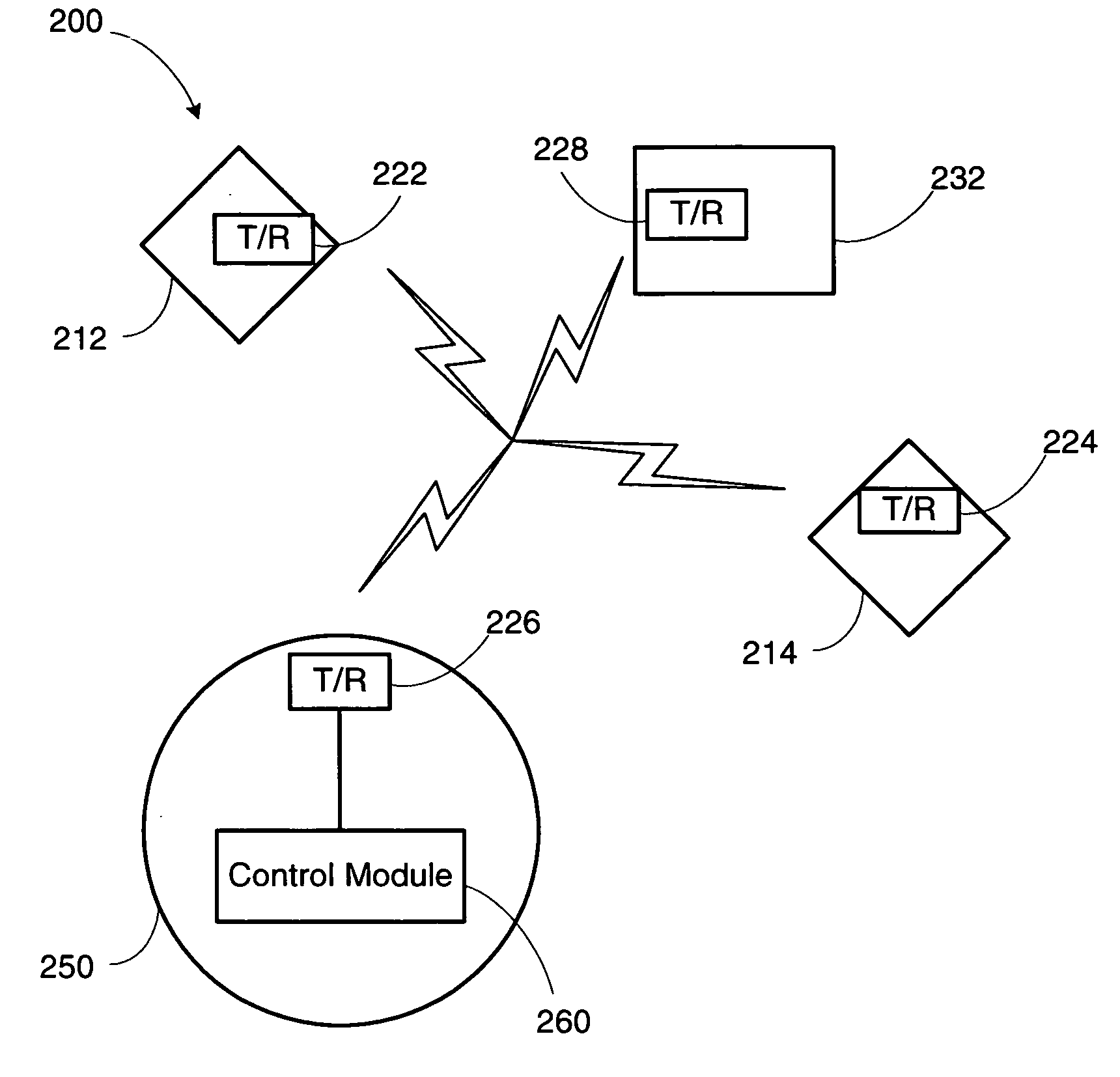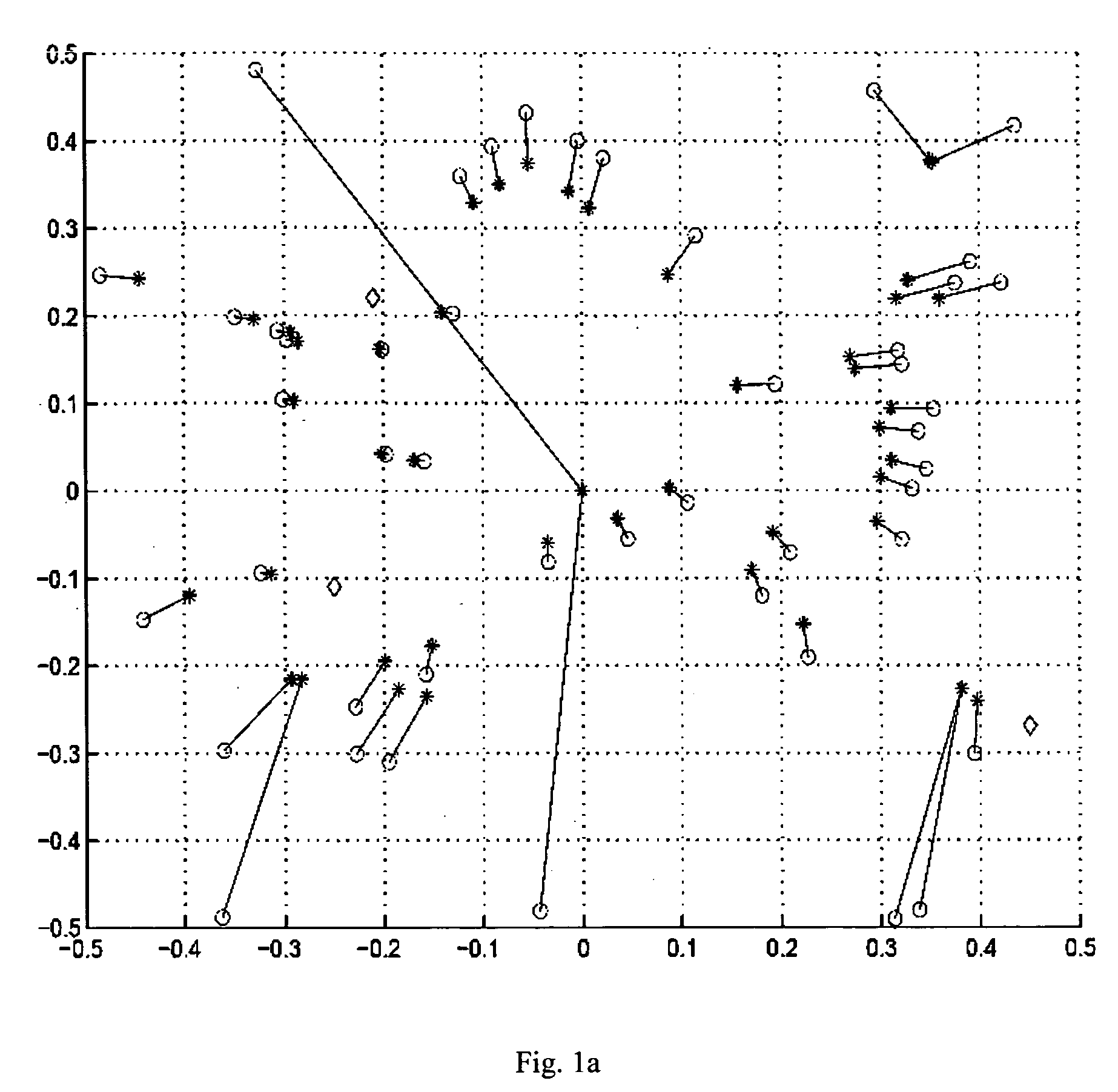Semi-definite programming method for ad hoc network node localization
- Summary
- Abstract
- Description
- Claims
- Application Information
AI Technical Summary
Benefits of technology
Problems solved by technology
Method used
Image
Examples
Embodiment Construction
[0034] A small portion of a typical sensor network 200 is shown in FIG. 9. The sensor network 200 contains anchors 212 and 214, which are sensors with known positions, also known as known sensors. The network 200 also contains unknown sensor 232, whose position is not known and needs to be determined using various methods, a few of which are disclosed in the current invention. Each sensor, an anchor or an unknown sensor has a network interface (222, 224 and 228), through which the sensor can exchange data with other sensors or a control station 250. Similarly, the control station 250 communicates with others through an interface 226. The control station 250 may be an independent physical device as shown in FIG. 9 residing in a central location, such as a central office. It may also physically reside on an anchor 212 or 214, in which case, it shares the network interface with the anchor and does not have an independent network interface. In another word, an anchor and a control stati...
PUM
 Login to View More
Login to View More Abstract
Description
Claims
Application Information
 Login to View More
Login to View More - R&D
- Intellectual Property
- Life Sciences
- Materials
- Tech Scout
- Unparalleled Data Quality
- Higher Quality Content
- 60% Fewer Hallucinations
Browse by: Latest US Patents, China's latest patents, Technical Efficacy Thesaurus, Application Domain, Technology Topic, Popular Technical Reports.
© 2025 PatSnap. All rights reserved.Legal|Privacy policy|Modern Slavery Act Transparency Statement|Sitemap|About US| Contact US: help@patsnap.com



